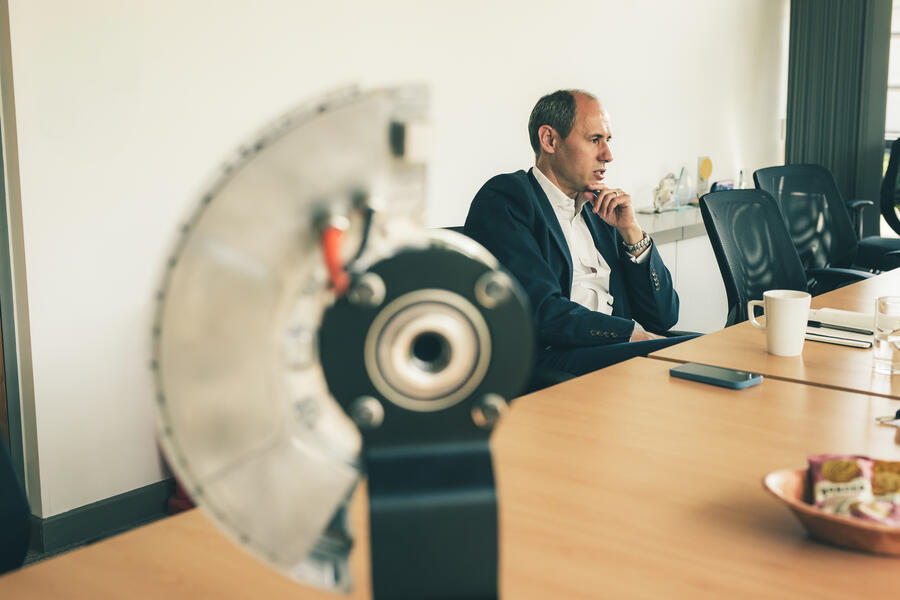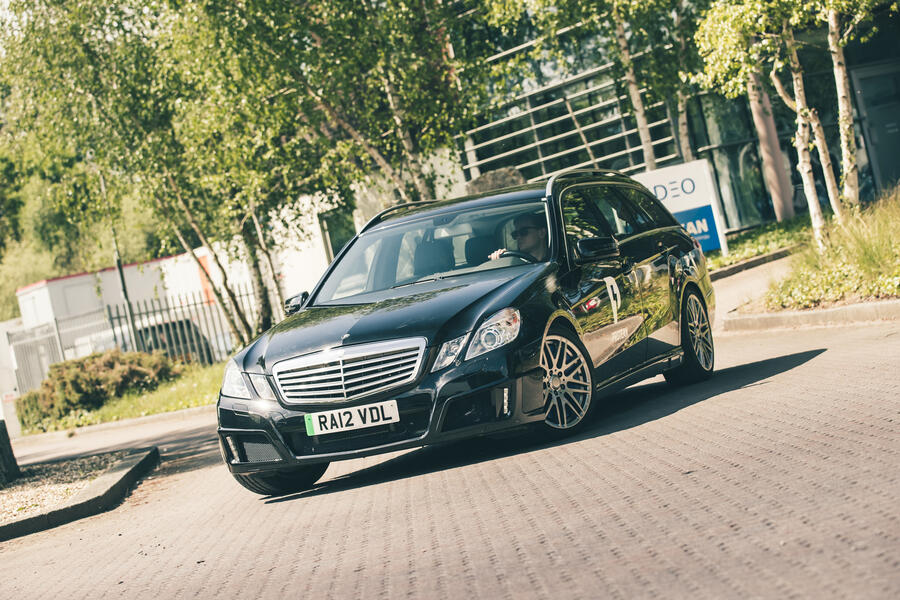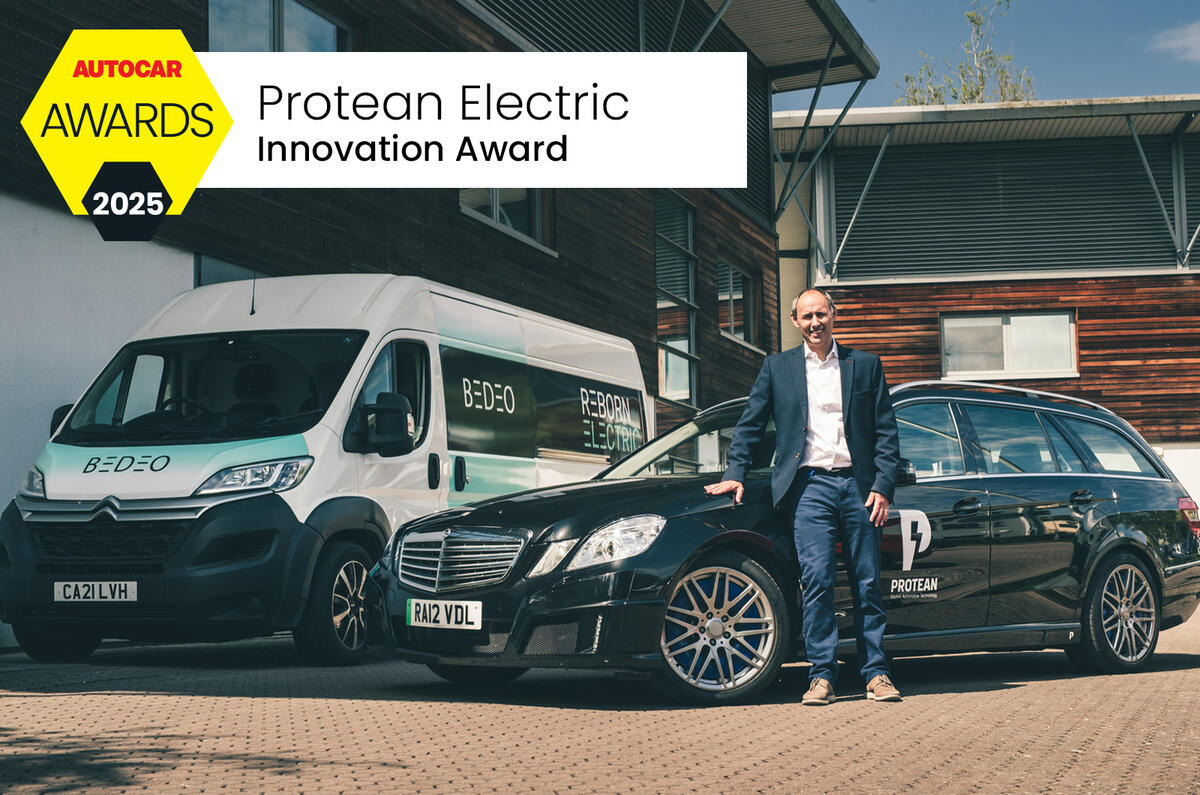Surrey-based EV motor developer Protean has its roots in a firm called PML Flightlink, which made headlines in 2006 when it fitted four in-wheel motors (IWMs) to a Mini Cooper to give 640bhp, a sub-5.0sec 0-62mph time and a £200k price.
The outfit was later acquired by NEVS, the Chinese-owned successor to Saab, before EV tech specialist Bedeo took it over in 2019 and began using its innovative IWMs as part of a range-extender conversion package for diesel vans.
Today, Protean – winner of this year’s Innovation Award – has around 120 stars spread across four global facilities: the UK engineering centre in Farnham, a factory in Tianjin, China, a supply chain office in Shanghai and a new production site in Istanbul. Last year, Protean built 1500 motors, around a third of which went to parent company Bedeo for use in the RE100 van.
But CEO Andrew Whitehead says it could make 10,000 units as things stand, before scaling up to 20,000 and then, 18-24 months later, 100,000.
Unlike many an ambitious tech start-up, though, Protean’s growth plans are not founded entirely on enthusiastic optimism and unbridled self-belief but rather a demonstrable appetite from key industry players to embrace disruptive new technologies and explore different ways of designing and engineering vehicles.

Whitehead says the company is already in discussions with a number of “major, well-established, global OEMs”, and he estimates the worldwide market for IWMs could be worth more than £15 billion by the middle of the next decade.
It’s moving fast, too: the first production car to use the technology is Renault’s crazy new 5 Turbo 3E hyper-hatch, due on the road as soon as 2027. Whitehead won’t say whether or not it’s Protean’s motors behind those mammoth monoblock wheels, but he does hail the 3E as an exciting showcase of what can be achieved with IWMs.
“It’s a great example of a car that couldn’t otherwise be done, and it’s using in-wheel motors to break some barriers in terms of electric vehicles,” he says. “So we commend Renault on their sage decision.”
The tangible real-world benefits of Protean’s motors include more immediate power delivery, more intricate apportioning of torque between the wheels (try 3690lb ft in a scarcely believable five milliseconds…), improved noise isolation and even the possibility to turn the driven wheels at up to 90deg.

But Whitehead says the potential of this technology goes far beyond enhanced drivability, and that can only be realised when vehicle architectures are actually being designed from the off around IWMs, rather than adapted to accommodate them.
“We believe that in-wheel motors will make better electric vehicles,” he says. “There are three elements of that: they will be lighter and more aerodynamically efficient, which means they will cost less because for a given range you will need less energy – and if you’re consuming less electricity, you need to charge it less often.”
The third element is the most important, he says: “They will be better for consumers because they will have more space inside them.”
By relocating all the traction components to the corners of the chassis, Protean’s powertrain solution allows for a flat and featureless floorpan that provides the springboard for a radical rethink of the conventions of vehicle design.
Whitehead explains: “The end goal is to re-architect the vehicle using in-wheel motors. We’ve shown that you can deliver one segment’s worth, and in some cases two segments, of additional space inside the same footprint. The best way to think about it is this: Volkswagen Golf footprint, Mercedes E-Class interior space.”

That uplifting cabin space has big implications for refinement and practicality, but Whitehead also notes that “the Golf is cheaper to make than the E-Class”, so big cars needn’t command such an overt premium in the IWM era.
So, then, to the obvious question: if this technology is such a vastly superior solution to conventional electric motors, why isn’t everyone already developing and using them? “Well, the automotive industry is still the automotive industry,” explains Whitehead.
“The biggest thing is technical risk: when a car company commits to put a technology into production, they are committing to – I use broad numbers – three years of development time, a minimum of seven years of sales and then a legal obligation to 15 years of servicing afterwards.
Add all those up and they have to be confident that throughout those 25 years (a) the technology is going to work, and (b) they’re going to be around to support it.”
It’s a culture of conservatism that has fostered technical ubiquity, but in today’s era of fearsome competition and ceaseless advancement, the time to experiment has come.

“The requirement to differentiate is much stronger now than even three or four years ago,” says Whitehead. “But the biggest challenge, of course, is cost. Anybody in the manufacturing side of automotive that’s not talking about costs is not in the industry.”
Whitehead acknowledges that there is currently an inherent cost penalty that comes with swapping from one motor to two on each axle, but he says “that is our final barrier”.
Protean’s current-generation IWM have undergone a rigorous and lengthy development programme to ensure that their enhanced capability doesn’t come at the expense of real-world dependability.
Solve the cost equation, says Whitehead, and Protean is on track to be at the epicentre of an all-out upheaval for the electric vehicle. “If the in-wheel motor market expands, as I believe that it can, it will be a giant market,” he says. “It will be over $20 billion in the middle of the next decade, and if we have 10-20% of that market, we will be a very successful business.“








Add your comment